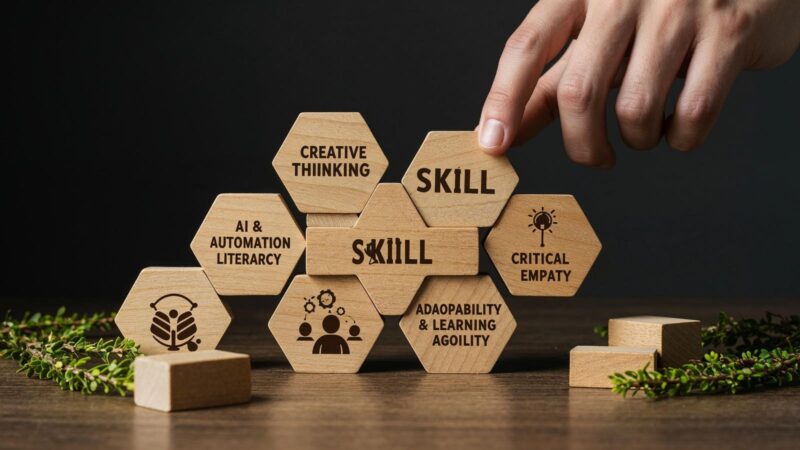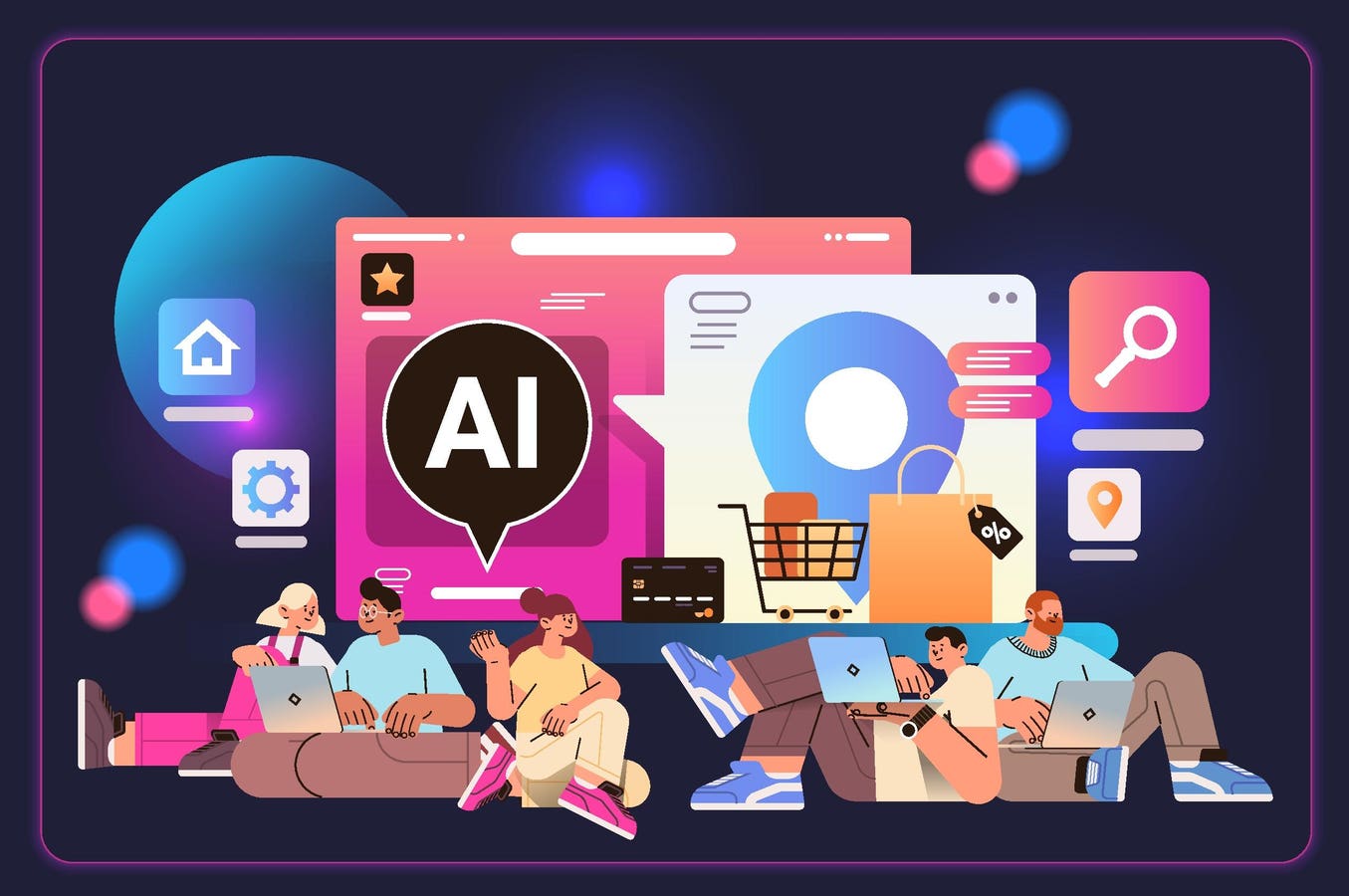As AI agents transform how businesses operate, leadership demands a radical skillset evolution beyond traditional management competencies.
Adobe Stock
The world of business is changing fast, and so is the skillset needed to be a successful leader.
In 2026, the best leaders will have the skills, experience and ability to manage the convergence of intelligent machines with human workforces, corporate cultures and customer expectations.
Of course, no two businesses are the same, so we can’t rely on developing a “cookie-cutter” skillset. Levels of AI literacy and cultural readiness vary across industries, geographical borders and even between departments.
Assessing this and applying whatever is necessary to deliver effective, scalable and safe digital transformation will be the key to success. With that in mind, here are the skills I believe every leader should have in their toolbox in 2026:
1. Agentic Workflow Management
In 2026, teams of intelligent algorithms will manage enterprise workflows end-to-end. Evolving beyond the purely generative abilities of tools such as LLM chatbots (eg, ChatGPT, Co-Pilot), these AI agents will take action by working towards completing long-term goals and interacting with external services. Overseeing and managing these autonomous workforces as well as fostering cultures that encourage effective human and machine co-working will quickly become an indispensable leadership skill.
2. AI Innovation And Entrepreneurship
Leaders capable of finding new ways to solve problems and create growth with AI will be the fundamental building blocks of business success in 2026. This doesn’t require deep technical knowledge, just an understanding of the capabilities and limitations of AI, and a deep understanding of their organization’s specific challenges. This means identifying real-world use cases, initiating quick wins and pilots, and scaling to operational deployment, all while maintaining laser focus on hitting strategic business objectives.
3. Data Stewardship
Data is the fuel of the AI revolution, and in 2026, every leader needs to understand their role in ensuring their organization’s data is both accessible and safe. While it must be readily available, and in a format that machines can derive insights from, it must also be secure, clean and free of bias that erodes trust and causes harm. Data stewardship means maintaining the integrity of the information that powers algorithmic decision-making; in 2026, this isn’t simply a technical task, it’s a fundamental leadership responsibility.
4. AI Ethics
AI has the potential to deliver enormous benefits, but also to cause significant harm. To mitigate the risks, it’s essential that it’s deployed in a way that’s transparent, fair, secure, accountable and explainable. During previous transformational technological revolutions—such as the advent of personal computers, or the internet—managing the risks was usually left to IT departments, tasked with installing firewalls and anti-virus tools. With AI, the potential harms are far more severe, encompassing customer privacy, human job stability and numerous other dangers we can’t yet predict. This means making sure AI is always used safely and ethically is down to everyone with any degree of responsibility.
5. Data Communication
Communicating the insights and actionable strategies derived from data analytics will be critical to leadership in 2026. Importantly, leaders must not just be able to communicate what data says, but why it says it. Explaining why AI makes decisions will be crucial to winning organizational buy-in, from above and below, and fostering corporate cultures where humans and machines can cooperate effectively. Won’t AI do this for us? Well, yes, to an extent. But we’re not yet ready to trust machines to truly understand the way insights will affect people, so this responsibility still falls on humans in 2026.
6. Cybersecurity Strategy
With technology becoming the driving force of business growth, responsibility for its strategy and stewardship spreads far beyond IT departments. Nowhere is this more true than within the domain of cybersecurity. Cyber attacks are increasing in scale and frequency, and the more reliant companies are on technology, the more vulnerable they become. Here, the role of leaders and managers is to foster security-first cultures, making sure awareness of the threats is second-nature to everyone. As well as raising awareness of social engineering attacks and deepfake phishing scams, this means assessing the security implications of every decision we make, to ensure we’re not leaving doors open to those with bad intentions.
7. Workforce Planning
With intelligent, agentic co-workers entering the workforce, understanding which tasks can be automated and which are still best left to humans will be a critical leadership skill in 2026. However, effective workforce planning goes beyond efficiency; it’s about preparing humans to work with machines, rather than be replaced by them, by providing the skills and training they need. Careful consideration has to be given to the skills that organizations must have in-house if they want to benefit from the opportunities on the table. At the same time, leaders must understand where the human touch is still essential, and where passing work to machines is likely to harm productivity, customer experience and morale.
8. Learning Agility
AKA learning how and when to learn. In 2026, leaders must subscribe to the philosophy of lifelong learning, constantly assessing and updating their own skillset. This means developing the ability to spot gaps in their own knowledge and training, and acquiring new learning on the fly. With research suggesting that the average useful lifespan of skills is dropping rapidly due to rapid technological change, leaders in 2026 simply can’t afford to let their skills stagnate. Some skills, like critical thinking, teamwork and problem-solving, are more durable than others, such as specializations in specific technologies. These should be considered a priority.
9. ESG Specialists
Environmental and social governance is another field that was previously the responsibility of specialists. Today, it’s so firmly embedded in business strategy that all leaders must understand it. In 2026, sustainability goals and ethical practices are closely aligned with the need to build resilient operations and supply chains, and hit business targets. This means the ability to interpret ESG data and guide progress towards sustainability and social responsibility goals is increasingly a core leadership competency.
10. Emotional Intelligence And Human Empathy
As automation and AI take on more and more work, people with skills and competencies that machines still can’t emulate become increasingly valuable. This includes being able to understand and appropriately react to people’s emotions, fears, concerns and feelings. The ability to listen, communicate authentically and respond compassionately lets businesses respond to the human concerns of their customers and employees in ways that machines won’t be able to do for some time, if ever. Professionals and leaders with this skill deliver value by fostering teamwork, collaboration and creativity across their organizations.
The skillset required for effective leadership in 2026 represents a fundamental shift from the competencies that defined success in previous decades. While technical expertise remains valuable, the ability to navigate the human dimensions of digital transformation, from ethics to empathy, has become equally critical. Leaders who embrace this broader skill set and commit to continuous learning will position themselves and their organizations to thrive in an era in which humans and intelligent machines collaborate to drive innovation, growth, and sustainable success. The question facing every leader today is simple: which of these skills will you prioritize developing first?









